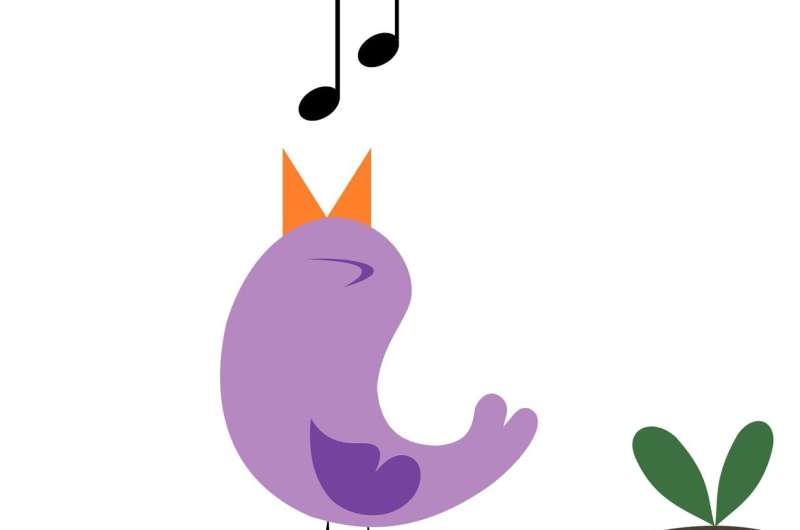
Speech problems such as stammering or stuttering plague millions of people worldwide, including 3 million Americans. President Biden himself struggled with stuttering as a child and has largely overcome it with speech therapy. The cause of stuttering has long been a mystery, but researchers at Tufts University are beginning to unlock its causes and a strategy to develop potential treatments using a very curious model system—songbirds. In a study published today in Current Biology, the researchers were able to observe that a simple, reversible pharmacological treatment in zebra finches can stimulate rapid firing in a part of the brain that leads to large variations in their song patterns, including the stuttering of short sequences of notes or syllables.
The part of the brain that appears to be linked to birdsong “re-tweeting” of syllables is the lateral magnocellular nucleus of the anterior nidopallium, or LMAN. When the LMAN is stimulated to fire its neurons in short rapid bursts, the birds start to “improvise” by varying the sequence of notes and tweeting a series of repetitions that share many similarities to stuttering in humans, including partial syllable repeats and abnormal pauses mid-sequence, followed by continuation to the next normal syllable after the repetition. Stuttering in syllable transitions can increase from 0.1% before treatment to as much as 13.6%. Typical frequency of stuttering in humans can occur in 4—8% of syllables.
The treatment used to induce LMAN to fire its neurons was a simple infusion of a drug, bicuculline methiodide (BMI), that acts on specific neuron receptors and ion channels. The changes in song patterns were observed to accumulate gradually over several days during infusion and can persist for weeks after treatment is stopped. Once the new song patterns are learned in the parts of their brain that control vocal motor activity, LMAN firing is no longer needed to drive them.
“We’re excited about the work because it suggests that burst firing may be especially important for driving long-lasting changes in vocal sequences and may be one mechanism that can be targeted to restore normal vocal sequences,” said Mimi Kao, assistant professor of biology at Tufts University and corresponding author of the study.
Earlier studies have evoked changes in song patterns not with a drug but by interrupting the auditory feedback by playing back white noise or a different song sequence. Rather than hearing just their own voice, the birds hear something different, and the mismatch causes them to alter the pitch, timing and sequence of syllables in their songs. It’s like trying to sing Sinatra’s “My Way” while someone is playing heavy metal in the background.
The pharmaceutical disruption of LMAN activity may be causing a similar alteration in auditory feedback to create variations and stuttering in song patterns. In both cases, removal of the disruption allows normal song patterns to return after a few days to weeks. And therein lies the hope for the treatment of speech dysfunction. If sustained aberrant firing patterns in LMAN or other regions of the brain can cause speech dysfunction, correction of those firing patterns could allow the brain to recover normal speech.
“Although the regions of the brain examined in this study have been known to be involved in speech dysfunctions, very little is known about the specific neuronal firing patterns involved,” said Sanne Moorman, former postdoctoral fellow at Tufts University, currently at Utrecht University and first author of the study. “This research offers a way to manipulate the firing patterns, so we can learn how they contribute to dysfunctional speech and explore pharmaceutical or other treatments to recover normal function.”
Source: Read Full Article
